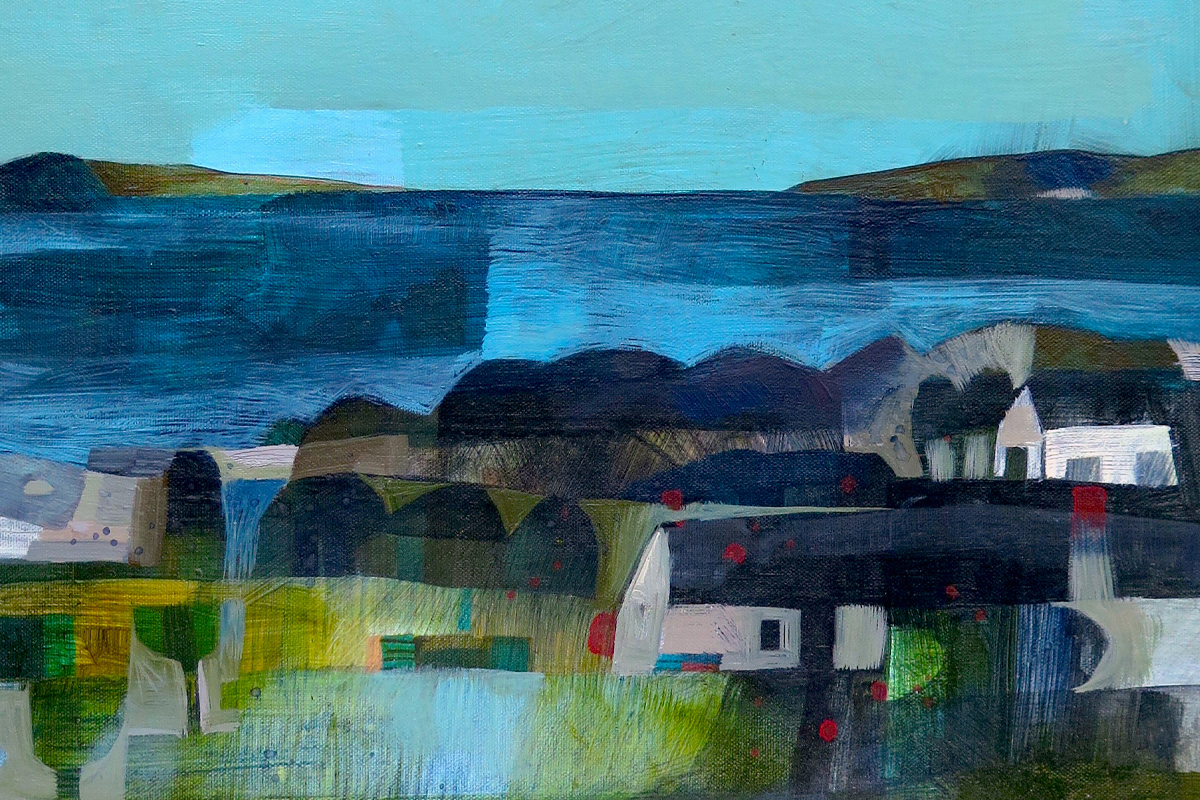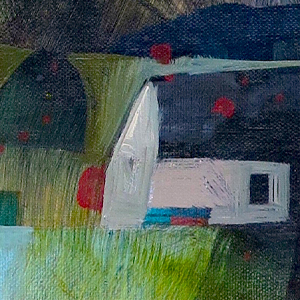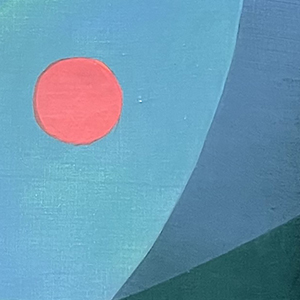
Good Medicine
The People Practice
Dad, Insurance, and Medicine
Ricardo Nuila
Artwork: “Blackwaterfoot” by Esté MacLeod © 2014
When I started working at Ben Taub, Houston’s largest public hospital, I didn’t know what it meant that most of our patients had no health insurance. Growing up, I experienced healthcare the way most people in this country do, which is through private insurance. My pediatricians encountered no snags as they kept me on the vaccine schedule and ensured I didn’t fall too far off the growth curve. The doctor-patient relationship looked idyllic from my vantage point.
My dad delivered babies for a living, and every Saturday morning, he brought me to the hospital for his rounds. I was my most docile self during our short car rides, which ended in the parking garage. From there, it was a couple of quick turns into back entrances and service elevators before we were on the labor and delivery floor.
“This is my son,” he’d tell the L&D nurses.
“Yes, we’ve met,” they’d respond graciously.
After the intros, my dad would punch a couple of numbers into an electronic keypad to open a door down the hall, and for the rest of the morning, I parked myself in front of the television in the doctors’ lounge, where I watched TV while he visited his patients inside the hospital.
It was glorious. Being at the hospital made me feel fortunate, like my dad’s assistant. Aesthetically, the lounge could have used a little love. Every table or countertop had granules of sugar speckled over it, and of course, the heavy aroma of burnt coffee hung in the air. I spent hours in there. Sometimes his doctor friends would come in, sit down, and make me chat to them about my family and school. Other times, they’d see me presiding over the TV and leave as quickly as they came in.
These Saturdays with my father started in America’s heartland, Wichita, Kansas, where my dad worked for a private clinic owned by a group of doctors. The clinic used the hospital we visited for all its deliveries, which was how my dad had his special standing. Having joined the group fresh out of residency, and less than five years after immigrating from El Salvador, he worked overtime the way a young lawyer working their way up in a firm might. The established partners gave him a base salary plus incentives for productivity. His schedule included plenty of overnight calls and undesirable shifts, though my dad never complained much. It must have helped that he was young, but my dad also saw his work as doctor as more than just a job. Medicine was his calling. Those scrubs in the OR and that suit in his clinic were his identity. To my dad, the privilege of talking with people about their problems and thinking about and sometimes operating on them was priceless. The partners set all the rules for the patients he saw and the payments he received; my dad didn’t have to do anything but work. “Estoy de turno,” I’m on call, became a common refrain around the house.
In 1986, sensing he might never make partner, he opened a private obstetrics and gynecology practice in Houston. His brother, my godfather, was also an ob-gyn, and so the two worked in tandem, sharing office costs while keeping their patients separate. They used a hospital on the northwest side, in what was a predominantly Hispanic neighborhood, for the vast majority of their surgeries and deliveries. As a demonstration of confidence in their future business relationship—and as a sign of the times of the 1980s—the hospital gave my father a $100,000 line of credit at 0 percent interest to start his practice, the only requirement being that he bring in patients.
The hospital also gave him a discounted rate on an office on the sixth floor of the adjoining professional building, provided he walk next door for surgeries and deliveries.
“It’s beautiful,” he said. The view was of nothing more than six lanes of freeway going in either direction, but to him, it could have been Mount Kilimanjaro.
This was how buoyant the world looked to a young doctor from El Salvador. In the Texas of 1986, anything was possible. My dad had moved from a group practice to a private specialty practice. He was no longer an employee of the doctor group in Wichita. Now he could decide what shifts to work and which patients to see. He opened his practice with an entrepreneurial sentiment: every cent generated from every surgery would funnel back into his practice and improve the level of care he could provide his patients. The money would also help his family grow.
With age, I began to notice the daily balance my dad struck between serving his patients’ needs and running a business. He had grown up hallowing medicine as if it were a calling, and like me, he took his early lessons from his own father. It’s very possible that Buenaventura Nuila, my grandfather, was the first Salvadoran doctor to earn a public health degree at Harvard. He didn’t stay in 1940s America long after receiving his diploma, though; he returned home to El Salvador to start a private pediatrics practice. Rather than serving the elite with his Ivy League degree, he focused on middle-class children, which in El Salvador meant the working class. Whenever my dad got out of school, he walked to my grandfather’s office and waited for him to see his last patients before the two headed home. If a child’s cough persisted beyond the salves, the humidified air, and the tinctures of tonic water, my grandfather made house calls. Sometimes, my dad would awaken in the dead of the night to find petrified patients staring blankly at the walls of his living room. My grandfather opened his home to his patients out of a simple belief: the profession of medicine demanded that a doctor take responsibility for the well-being of others. Money came second.
My dad exhibited a similar work ethic within his own practice. He wore a suit to the office every day and insisted on meeting all new patients face-to-face from behind his escritoire. This was in contrast to those profit-minded colleagues he reviled, who introduced themselves while inserting the speculum to procure a pap smear, because they “had no time.” Courtesy and attention were as fundamental to my dad’s practice of medicine as knowing anatomy.
These were my earliest lessons in service. I thought of it as “People.” It was why I wanted to become a doctor in the first place. I’m not talking about just “helping others,” though that was definitely part of it. “People” meant listening to patient’s histories. It meant communicating prognoses and treatment plans
clearly.
But People went beyond practice. People included style. People was medicine’s art. Once my dad delivered a baby wearing a tux. I was in line for hors d’oeuvres at a Hispanic Business gala to which my dad had purchased tickets when he tapped me on the shoulder. “Be right back,” he said. We didn’t see him again for almost an hour: my mother and my girlfriend—now my wife—had speculated he was just telling his jokes as usual, but no, it turned out that the labor of one of his insured patients had extended longer than expected. I tried to imagine him doing his job wearing a loose gown over that tuxedo, and I asked him what his patient thought. “She liked it,” he said before diving right back into the party.
Later, I thought about how that tux may have influenced the delivery. Could it have relaxed the mother and allowed a smoother birth that didn’t require Pitocin or other medications? My father was the type of guy who could pull it off, too. It’s very likely the experience ended up going beyond the standard delivery, which was why medicine wasn’t just science.
There are incalculable moments that could tip patient care one way or another. The way a doctor pronounces a word, the way he dresses, his accent, even the volume with which he spoke, all influence whether a patient decided to take a medication or not.
I knew that the doctors I admired had perfected the “People” part. A good doctor gave her patient confidence. A good doctor knew the diagnosis just from talking with someone. A good doctor gave his patient what was needed at key moments, whether it was a hand on the shoulder, a statistic, or, as I learned from my dad, even a well-timed joke.
This old-school commitment to patients as people bore fruit business-wise. Soon after he opened his office, corkboards filled with photos of him hoisting up babies he delivered lined the walls between exam rooms. The collages grew so plentiful that my dad routinely had me change them out for new ones.
“It’s kinda sad,” I said, tossing an old corkboard into the trunk of his Mercedes.
“Ricky,” he said, “there are too many.”
His practice grew. My dad began taking care of the next generations of women; some of the babies he delivered entered his office nearly two decades later. Mothers and daughters visited him together. He earned sufficient income to send all three of his children to a private grade school, then private high schools, then private colleges.
But the splendor didn’t last. By the time I started medical school in 2002, more than half of my dad’s patients carried insurance through Medicaid. A decreasing number carried private health insurance through their work, as employers avoided offering health insurance as a benefit and hired fewer full-time employees and more contractors. Medicine was becoming corporatized. Large health insurance companies purchased more and more hospitals, retirement homes, anything to integrate care and drive up their profits, even doctors’ practices. My dad’s mom-and-pop practice now had to compete with the medical McDonald’s. With the cost of supplies increasing, he couldn’t afford to treat uninsured patients, and so he turned more and more away.
The pressures manifested inside his office. The old escritoire now held stack upon stack of manila envelopes, mostly filled with unpaid insurance claims. The floors themselves were overgrown with stacks, such that vacuum trails, left by the maintenance staff in an attempt to swerve away from the colossal columns, had embedded themselves in the carpet. He hadn’t spoken with a patient in there for years.
As I progressed through medical school, my dad asked me whether I might follow in his footsteps and take over his ob-gyn practice. He envisioned the two of us passing each other in the hallway between exam rooms or discussing difficult cases in his office with a view of the freeways.
“Have you thought about it?” he asked me. “It’d be nice.”
For more than two decades, my dad had done the heavy lifting of building a tried-and-true moneymaker. But my memories of my dad’s experience as a doctor didn’t entirely line up with his own. The overgrown stacks of folders stood out to me as much as the corkboards lining his hallway. I was on the verge of leaving medicine altogether for a career in public health or, possibly, as a writer. Medicine in America appeared far too transactional, too dictated by insurance, not enough about People.
• • •
Early in my career, during my internship, I was slated to take care of patients on Ben Taub’s general wards, meaning those hospitalized for some degree of organ dysfunction—kidney disease, liver cirrhosis, pneumonia, infections of the skin. Every morning, I pulled into work listening to a Wilco song. I wasn’t superstitious, but one particular line seemed to encapsulate all the illnesses I was witnessing and my general feeling of ineptitude, and it comforted me to recite it: “Maybe I won’t be so afraid.” I have no idea when this ritual stopped.
I arrived on the wards and printed out a list of my new patients. Then I visited each hospital unit and started reading through the charts. Everything was paper back then, meaning you could flip and flip and flip—through orders, test results, the notes of other doctors—and still not get to the bottom of what exactly was happening. One patient had a particularly large chart, actually two charts duct-taped together: Alvaro. It was so heavy and had been flipped through so many times that, like on an old book, cracks had started to show in its gray spine.
I read about Alvaro’s many surgeries: hip surgery, belly surgery, large portions of his intestines removed. For months, he couldn’t eat, his only nutrition delivered through an IV and then a tube in his stomach. It started as colon cancer. It had spread throughout Alvaro’s body to multiple organs and joints. Over the prior nine months, he’d spent only a couple of weeks out of the hospital. Otherwise he was in the ICU, then the wards, then the ICU again with septic shock from an infection of the blood, then a rehab center, then again the ICU. And now Alvaro was here on the wards, in Ben Taub, my new patient. After flipping through the chart, I draped a stethoscope around my neck and went to meet him.
“English or Spanish?” This was the first important question I asked.
“Español,” he said.
As a medical student, professors used to praise me for the translations I provided. They had no clue. I’m the son of Salvadoran immigrants, and as such, grew up with Spanish everywhere—at the dinner table, at my parents’ parties, every summer visiting my grandparents in the hills outside the capital. But apparently reading and studying English influenced me more, and I speak Spanish like a gringo. It is something I’m constantly aware of, a part of who I am and how I’m seen. Except at Ben Taub. The patients here rarely mention it. Even my Spanish is music to their ears.
“Any bleeding?” I asked.
Mr. Alvaro shifted his head a little. “I don’t think so.”
“Can you lean forward?” I said, giving him a little push.
He took two short breaths like a weightlifter in the clench and stayed right in place. “Not really,” he grunted.
When I was on my way into his room, the nurse had stopped me. There was a decision I had to make, the quicker the better. “MAP is sixty,” she said. “Want to give fluids?”
It took me more than a second to realize what she was saying. The mean arterial pressure tells us if our vital organs are receiving an adequate amount of blood and nourishment. If this number is too low, then organs aren’t receiving the blood supply needed to survive. My new patient’s MAP was right at the cutoff. Patients with low MAPs usually have to go to the ICU. Mr. Alvaro had just come from the ICU, and the nurse wanted to know if we could give IV fluids to bring up the MAP or if we needed to send him back.
I told the nurse to give me a minute. In thinking about what to do about the MAP, I had almost blinded myself to what was in front of me: a scared man, struggling to live as much as to die. I went back into the room, sat down beside Alvaro, and listened to his story.
Alvaro told me about the past nine months of his life—not about the pain or the vomiting or the bloody stools constantly filling the bag attached to what remained of his intestines, but how he had become a burden to his family. His daughter stayed with him in the hospital most nights and worked during the day cleaning offices. She had to. If you’re poor and people depend on you, you can’t not make money. She had kids at home, too, school-aged kids. Alvaro told me she should have been taking care of them, not him.
Somehow, in this moment, my Spanish didn’t stumble. “You know it’s okay if you die,” I said. As ever, I could hear a note of gringo, but the accent sounded muted, unimportant.
He was the same age as my grandfather: maybe that’s why I said what I did. Or maybe seeing the fear in his eyes when we discussed what might happen next, that this could go on, gave me the courage to be frank.
When I came out of the room, I saw the nurse talking with a woman I quickly recognized as Alvaro’s daughter. I buttoned my white coat and wove my way into the conversation.
“How is he?” the daughter asked.
I told her what Alvaro had told me, that he didn’t want doctors to resuscitate him if his heart stopped, that he didn’t want a breathing tube inserted under any circumstances. What this meant was that he wouldn’t be returning to the ICU again, ever.
“He’s been through so much,” I said in Spanish. “I think he’s tired.”
She nodded. It was still summer, the ridiculous Houston heat continued to broil outside, and yet everyone in Ben Taub wore layers and long sleeves. The AC did that to us. The daughter shivered, held her elbows tight. “I know he is,” she said.
As I started to walk away, the nurse reminded me about the MAP. “Are we giving fluids?”
“He’s DNR/DNI now,” I said. “I’ll put in the order.”
I flipped to the “Orders” section of his chart, wrote “Do Not Resuscitate” with my signature timed and dated, and slid the wobbly chart into its slot. I called my attending and told him about the change. Immediately I turned my attention to the next name on my list, a patient staying on the other side of the hospital. I didn’t walk there with my usual quick pace, but I didn’t saunter either. Ten minutes later, I was absorbed in a different patient’s chart. That’s when my pager went off. I cursed having to be so connected and called the number back.
“This is the intern,” I said.
“Just wanted to let you know that Mr. A just passed,” said the nurse.
“He’s dead?”
“The daughter’s at the bedside.”
I rushed back to the unit and met the daughter in the hallway. She was on the phone, pacing, crying, holding a tissue beneath her nose, getting words out. I didn’t want to interrupt her, and so I waited until I had her attention, and then I mouthed to her in Spanish, “Lo siento.”
She smiled at me courteously and held her hand over the receiver. “It’s okay, it’s really okay,” she said.
It didn’t hit me until after I performed what had to be done next—the death exam, the death note, signing off for Transportation to wheel the body away—that Mr. Alvaro might have still been alive if we hadn’t talked. Was that even possible? That words could mean the difference between life and death?
It’s been over a decade since Mr. Alvaro died. I’ve cared for hundreds of patients at Ben Taub in that time, patients from Nigeria, Bhutan, Eritrea, Vietnam, the Fifth Ward here in Houston, even from my grandparents’ village in El Salvador, the majority of whom lacked health insurance. Our overcrowded ER and how we’re constantly being asked to demonstrate our productivity—in increasingly granular ways—is a testament to the continuous pressures imposed by private healthcare. But for the time being, I don’t feel bogged down by insurance companies. The public hospital has shown me a different side of healthcare, one that I’ve latched onto and hang my hopes on. I can still focus on people.
Adapted from Ricardo Nuila’s book The People’s Hospital: Hope and Peril in American Medicine (Scribner, 2022).
 Ricardo Nuila is a practicing internal medicine doctor and hospitalist serving at Ben Taub Hospital in Houston, Texas. He serves as an associate professor of medicine, medical ethics and health policy at Baylor College of Medicine, where he directs the Humanities Expression and Arts Lab (HEAL). His first book, The People’s Hospital: Hope and Peril in American Medicine (Scribner, 2023) was shortlisted for the Goddard Riverside Stephan Russo Book Prize for Social Justice.
Ricardo Nuila is a practicing internal medicine doctor and hospitalist serving at Ben Taub Hospital in Houston, Texas. He serves as an associate professor of medicine, medical ethics and health policy at Baylor College of Medicine, where he directs the Humanities Expression and Arts Lab (HEAL). His first book, The People’s Hospital: Hope and Peril in American Medicine (Scribner, 2023) was shortlisted for the Goddard Riverside Stephan Russo Book Prize for Social Justice.
Fall 2025
Part I: Employing Virtue
Chris Higgins
Anna Bonta Moreland
Karen E. Bohlin
Zena Hitz
Interlude: Meaningful Employment
Michelle Weise
Part II: Employing Vocation
MORE

















